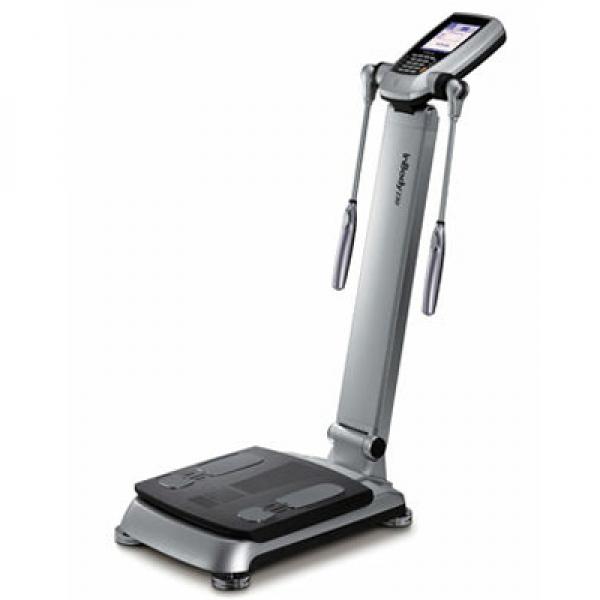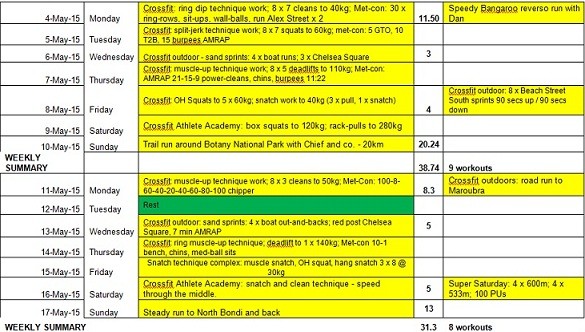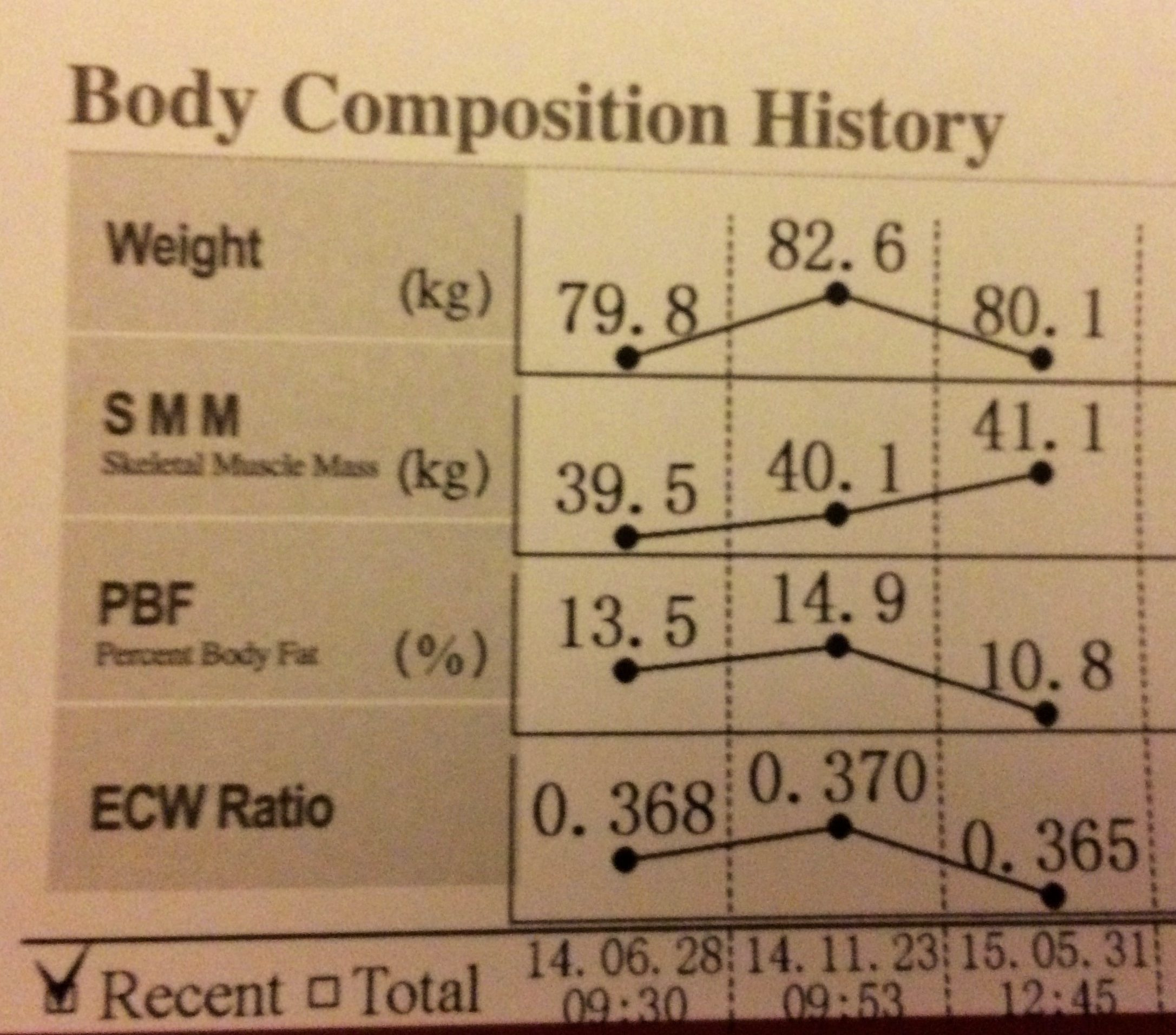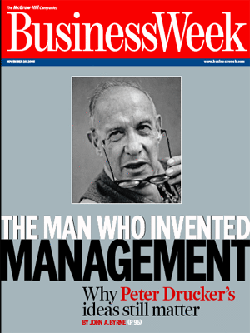I recently embarked on a total body overhaul; a mission to reduce body fat to levels…
Made To Measure – 5 Ways For Dads To Stay Accountable In Your Training
For time-starved Dads (especially) – but, let’s face it, everybody is time-starved these days – staying the course with a training program or exercise regimen boils down largely to staying accountable.
Peter Drucker famously said, “if you can measure it, you can manage it.” When one of the gurus of modern business management drops an edict like this, it’s well worth paying attention.
This mantra can be readily transferred from the business world to pretty much any sphere but where it becomes especially applicable for Super Fit Dads is in health and fitness.
It’s here that we can keep close tabs on our progress to ensure we are making positive strides forward or, at the very least, we’re not going backwards. By keeping track of vital physiological metrics (weight, body fat %, muscle mass, heart rate) and / or performance metrics (personal bests in various lifts / exercises), we have an irrefutable measure of progress; something to congratulate ourselves on, or something to spur us on to do a little bit more.
Here are 5 things I have experimented with to keep tabs on my training.
1) In-Body or Dexa Scan
I stumbled across the In-Body guys at my local gym (Titan Fitness in Coogee). I’m a closet data-junkie so leapt onto the scale, held the arms and let the machine work its magic.

Every 6 months I hop back on and check my progress. It seems eerily accurate. For example, I’d been on a mass-building kick focusing on compound lifts and eating everything I could put my hands on. The result? Weight up by 2.8kgs in 6 months – brilliant. Body fat up by 1.5% – less agreeable.
Interestingly, with more time on my hands to start Crossfit training, my body fat came down by 4%, I shed 2.5kgs but gained 1kg of skeletal muscle mass.
I’m a healthier version of myself and a stronger one, too.
There’s not much time for back-slapping, though. I’ll be back on the scale in 6 months time with no place to hide.
An In-Body scan costs $40 at Titan Fitness. The usual rate is $80.
2) Benchmark Workouts / Lifts
Another fantastic way to measure your progress is against time-bound benchmark workouts. Usually these are every 4 to 6 weeks and provide a barometer of your improvement (or decline).
These workouts tend to be fairly generic and, as such, are often painful of their own accord with the added spice or competition and potential failure. They also offer much greater scope for improvement in newbies who are coming off a lower base, as I’ve found with my Crossfit weightlifting.
Some easy benchmark workouts to do at home are:
50 burpees for time (or 100 burpees or even 7 mins of burpees)
100 push-ups, 100 sit-ups, 100 bodyweight squats for time
Run 1 mile (or 5km if you’re so inclined)
100 kettlebell snatches in 5 minutes
All of these workouts are quick, painful and will test your heart, your head, your lungs and your limbs – all worthy constituents of your overall fitness level – if you’ve got something to aim for, like beating your previous best.
When I starting timing myself doing 50 burpees, the clock stopped at around 5 mins 30 seconds. A few months later I’d got this down to 3:07. Both hurt equally but I was clearly getting fitter.
3) Signing Up For Events or Races
If you’re keen on your cardio, then entering races is a superb way of measuring up. A competitive environment will usually bring out the best in you since there’s nowhere to hide or slack off. As I discovered recently at the Sydney Harbour 10k, even if you don’t score a PB, you’ve still managed to get in a really good training run.
Entering races every week can be an expensive business which is why I love the Park Run series which is held weekly at locations all over the world. The best bit is that it’s completely FREE – something that sits especially well with Super Fit Dads, whose spare cash has plenty of other ways of escaping.
4) Weight / Resting Heart Rate
If you want to keep things really simple you can keep tabs on your resting heart rate and hop on the bathroom scales. I used the Sleep Cycle app for a little while which had the added bonus of monitoring my zzzs.
I’m not sure how accurate or genuinely scientific this is and I deleted the app.
5) Training Diary
Since December 2012 every training session I’ve done has been logged in my trusty excel training diary. It’s a pretty rustic affair but records all of the key metrics: type of session, distance covered, weight lifted, sets and reps.
This has been invaluable during marathon training and for recording Crossfit performance. It also shows me where I’m overtraining. The one thing missing would be some kind of description of how I feel during the session.
There are more scientific ways of recording this information but this works for the purist in me. For now.

The advancement of fitness-related technology and increasingly “smart” devices means that my humble spreadsheet will soon become even more of a relic than it is now. The likes of Garmin, Strava and Fitbit are now increasingly ubiquitous and it’s surely only a matter of time before one of the major sportswear manufacturers takes this completely mainstream with some kind of smart garment.
It appears inevitable that soon the regular-Joe athletes will have access to the same kind of data that for years has been the preserve of elite-level sportsmen and women.
Peter Drucker would have been delighted.
SFD
[optin_box style=”12″ alignment=”center” email_field=”email” email_default=”Enter your email address” integration_type=”mailchimp” double_optin=”Y” list=”9d98ca1e8f” name_field=”FNAME” name_default=”Enter your first name” name_required=”Y” opm_packages=””][optin_box_field name=”headline”]7 Days Of Power – Free 1 Week Plan [/optin_box_field][optin_box_field name=”paragraph”]PHA+VHJhbnNmb3JtIHlvdXIgbGlmZSBhbmQgaW5zdGlsIGhhYml0cyBmb3IgYSBsaWZldGltZSB3aXRoIGEgNyBkYXkgcHJvZ3JhbSBvZiB3b3Jrb3V0cyBhbmQgbWVhbHMuPC9wPgo=[/optin_box_field][optin_box_field name=”privacy”]We value your privacy. So no spam.[/optin_box_field][optin_box_field name=”top_color”]undefined[/optin_box_field][optin_box_button type=”0″ button_below=”Y”]Yes Please![/optin_box_button] [/optin_box]
Comments (2)
Comments are closed.





Top tips super dad! Will try the time tests as need to get re motivated after a lull
Re your spreadsheet. How about a review of the apps out there at the moment that could replace this?
From
Thanks mate.
Strava is pretty popular with my running buddies as you can use the app pn your phone but it also synchs with Suunto and possibly Garmin running watches.
For a basic strength program focusing on compound lifts the 5×5 Stronglifts program and app is pretty good. You have to be committed to stick with the program though.
Some people use Fitbits to measure steps, heart rate etc. I would say it’s mostly women but Steve Maxwell – one of the guys who introduced kettle bells to the US – wears one and he’s one of the fittest 60 year olds on the planet.
Good luck with the training.